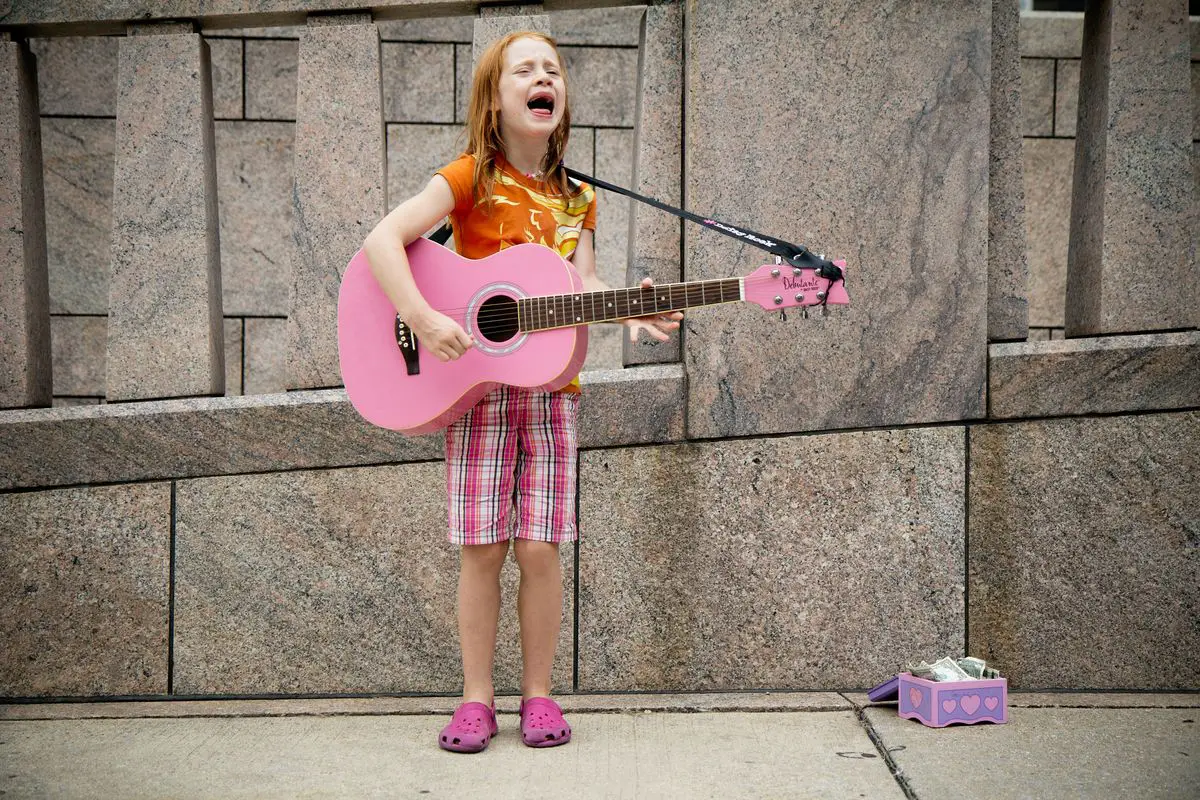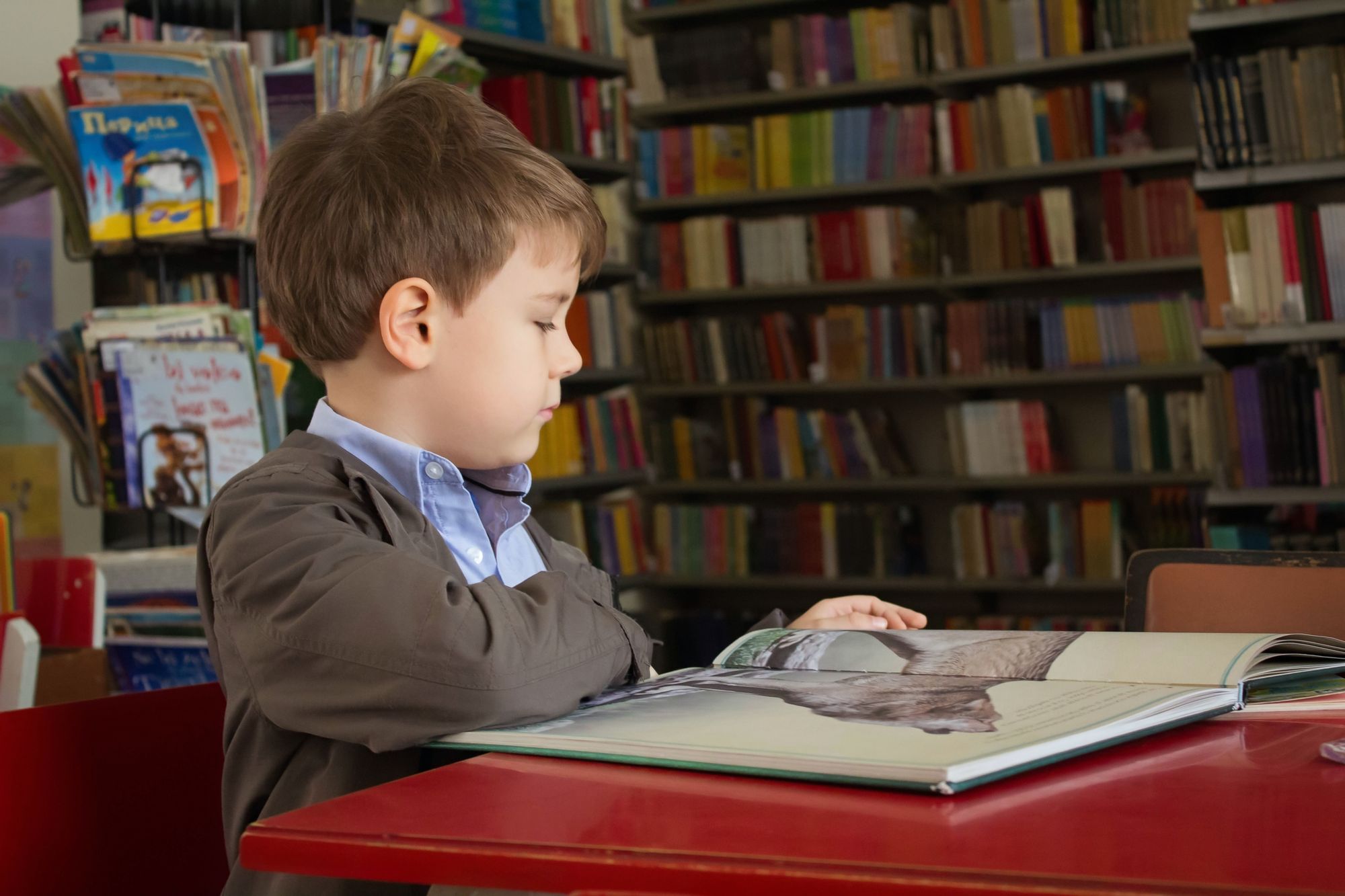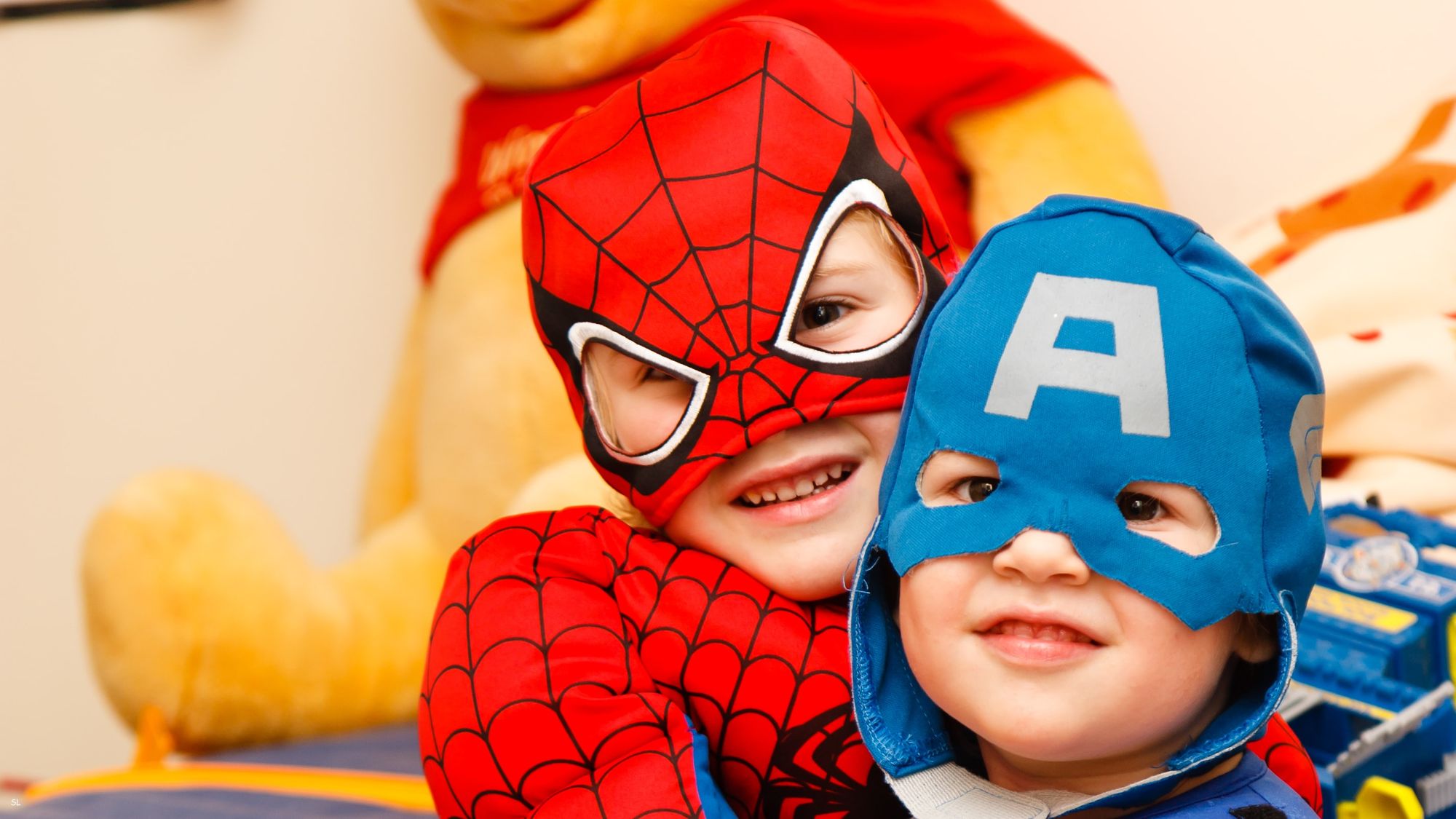Singing Lessons For Kids: Your Comprehensive Guide

There are so many singing teachers out there, but there are few who are willing to teach young kids. This is very unfortunate, as the journey to becoming a good vocalist should start at a young age. Kids love to sing, and there is no reason why they should be turned away from singing lessons. Teaching kids to sing does not have to be difficult and having the right guidance helps. So here it is, singing lessons for kids: your comprehensive guide.
Singing lessons for kids can be daunting. Children learn differently from other age groups, and so the lessons must be adapted accordingly. Focus on songs, and use songs to teach necessary techniques and skills. Keep the lessons fun, be prepared and patient, and the lessons will be successful.
Teaching kids to sing can be difficult, and the lessons are not the same as for adults. However, if you take the time to learn how to teach kids to sing, developing your own teaching methods to work well for kids lessons, then the lessons will go well. The child will learn how to sing and both of you will have a great time! Let's explore what singing lessons for kids entail, how to structure singing lessons for kids, and how to keep the lessons fun!
Singing Lessons For Kids
Singing lessons for kids are very different from singing lessons for older teenagers or for adults.
The methods that are used for teaching must be different, the timelines are different, and there are many more considerations to make for kids' lessons than for adult lessons.
Teaching kids how to sing does not need to be difficult or daunting. Most kids will surprise you with what they are capable of. If you establish a good start to the lessons and a healthy teacher-student dynamic, the lessons will be enjoyable for you and the student, and the student will make excellent progress.
There are a few things to keep in mind when teaching kids how to sing.
Kids do learn quickly, but they may not remember everything the first time. Kids want to have fun more than they want to learn a skill, so do not expect them to be diligent at practicing their singing. Even parents will not motivate a child to practice well if they are not truly interested in singing.
Do not expect every child to become an amazing singer, but rather aim to teach the child to have a love for music. Help them develop a passion for singing that will enable them to learn well - this will ensure that they continue with lessons and work on their skill, even when the going gets tough.
Kids have fantastic potential, and with the right teacher, they can make amazing progress. There are many talented kids out there who need the right teacher to guide them.
Keep an open mind, teach the kids well, and they will surprise you with what they can do.
With that in mind, let's dive deeper into teaching singing lessons for kids!
What To Expect

When teaching singing to kids, there are different expectations compared to teaching adults or teenagers.
Kids do not know what they want, except the fact that they love to sing and they want to do it more. They do not know that it takes hard work, training and technique; they simply want to sing.
For this reason, it is normal to expect some resistance when introducing kids to the work required to sing well. Exercises, warm-ups, practicing, and breathing are not what kids expect when they come to their first lesson, so it is important to ease them into the necessary aspects of vocal training (it's not just about singing songs).
In saying that, your student should not be led to believe that they do not need to warm up their voice before a lesson! But this can be taught in subsequent lessons.
Do not expect a young student to excel immediately, and do not expect very quick progress. Rather, come into a singing lesson with a child expecting them to be excited, nervous, quiet, and eager, even if they do not appear to be happy to be there at first.
Parents may want to sit on the first lesson, but if you can, try to convince them to not sit in. The child will respond better to you if their parents are not in the room. If a parent sits in, the child will have two authority figures to look to, and their parent will always out-rank you, even though the parent will not be able to guide them in the singing lesson.
Rather ask the parents to wait outside the classroom and leave the door open. The parents will hear the lesson and feel comfortable that their child is safe, but the student will have only one authority figure in the room.
Help the child feel safe and comfortable and maintain a kind demeanor while at the same time encourage them to come out of their shell.
The first lesson is important, but after the student becomes accustomed to you and what the lessons entail, they will quickly settle in, and the lessons can progress smoothly.
In Summary:
- Children expect to sing songs in their singing lessons
- Kids will not understand or be interested in hard work and technique
- Their emotions can range from excited and eager to nervous and quiet
- Parents might want to be involved
- You will need to build a relationship with the child
How Old Should a Child Be to Begin Singing Lessons?

This is a very heavily debated question, but there is a lower limit to how old a child can be before they begin formal singing lessons.
Other instruments such as the recorder or even the piano are simple to get started on and easy to produce a note form, but singing is more involved and can be more challenging at the beginning.
A child should be old enough to endure a 30-minute singing lesson without taking a break, they should at least recognize basic colors and their names (this helps with many teaching methods), and the child should be able to communicate clearly (they should be able to speak and understand speech fairly well).
This means that most children should be able to begin basic singing lessons when they are 5 or 6 years old. Some especially well-developed children may begin when they are slightly younger, but teachers that do not do well with young children should only accept students who are at least in the first grade.
This will ensure that the student is not overwhelmed by the lessons, even if the lessons are simple. They will also be more likely to continue lessons rather than become frustrated and stop, leaving with the memory of a bad musical experience.
How To Approach Singing Lessons For Kids
As we have previously established, singing lessons for kids should be approached differently compared to lessons for older students because the lesson goals and outcomes can not be the same for both age groups.
The lesson approach for teaching young kids how to sing should be fun and should be song orientated.
Technical skills and exercises should be incorporated into songs as much as possible, putting the emphasis on actually singing songs rather than doing exercise after exercise.
Kids want to sing. Let them sing, and teach them what they need to know and the skills they need to have by singing songs as much as possible.
Kids will respond to the lessons better and make quicker progress if they are having fun and singing songs rather than working on breathing and technique exercises.
There is room for exercises and improving technique - this is vital for progression. However, it should not be the focus of the lessons until the child grows a little older and is able to handle more intensity in the lessons.
Be sure to keep a very close eye on the student, looking out for bad habits forming and other potential problems, but also be ready to let minor issues be, without strictly correcting everything that the child does.
Let the lesson be fun for the student, and correct them and guide them as they go. They will not be doing anything too complicated for a while, so small corrections and technique instruction can be done along the way before they reach more advanced levels.
Young students will learn better from demonstration, and they will be watching you very closely. If young students have problems with posture and projection, it is usually because their teacher has the same problems.
Be sure that your techniques and skills are always demonstrating what you want the young student to grow into. Get your singing right, and their singing will follow.
Incorporate technique and breathing exercises, as well as posture correction, into the lesson slowly.
Demonstrate the techniques and practices, and perform them with the student. Teach them good warm-up techniques right from the beginning, but use songs to teach them all of these important aspects of singing.
In Summary:
- Make the lessons fun!
- The majority of the lesson should involve singing songs
- Incorperate technique and other corrections into games and singing
- Make sure you demonstrate what you are trying to teach
How To Structure A Kids' Singing Lesson

The structure of a singing lesson is just as important for kids as it is for adults, even if it does look slightly different for adults and children.
Let's look at a basic lesson structure for a child's first singing lesson and for the lessons that come thereafter.
The First Lesson
The first lesson is vital. This is the lesson where the teacher-student relationship is established, which means that it is as important for you as it is for the student.
A kids' first singing lesson should follow this basic structure:
1. Establish a relationship.
This first step is where you greet your student and their parents, show them around their new classroom, introduce yourself, and get to know your new student.
2. Find out why the student is there.
Find out what are their goals are, what kind of music they enjoy, what inspires them, and what singing means to them.
3. Explain how singing lessons work.
This is your opportunity to set the students' expectations for the lessons. Explain what singing lessons entail and how practicing works. Students should be told what is expected from them in terms of practicing at home, but let them know that they will be singing all of their favorite songs, even it takes time to reach that skill level.
After this conversation, the lesson begins!
4. Begin with a very basic song.
Something as simple as happy birthday will work. Be sure to use an accompaniment instrument or a backing track to sing along with.
- Teach the child to sing the song according to your methods, and look for any corrections that need to be made.
- Show the student good posture techniques and encourage them to stand correctly.
- Repeat the song with a corrected posture.
- Next, teach the student when to breathe in the song and correct any embouchure issues that are immediately apparent.
- Repeat the song with the corrected techniques.
5. Go through some very basic warm-up exercises.
Basic vowel movements with the mouth and pentascales will work fine. This is a great time to introduce the copy-cat game! You sing the warm-up and they copy. Kids love copying the crazy sounds we make when we warm up.
6. Sing through the song again.
Once the student has completed the above, sing through your chosen song again and point out the differences in their singing. Make sure to talk about the improvements that they have made already.
By this time, the lesson slot should be almost over.
7. Finish with some encouragement and homework.
Encourage the student, explain what they must go through before their next lesson, and send them on their way, confident that they will achieve all of their singing dreams and goals.
Subsequent Lessons
Subsequent lessons are where the real work begins.
This is when the singing lessons actually begin. The first lesson is an encouragement and an introduction, but all subsequent lessons will be wokring on technique and improvement.
At this point, it is important to break the lesson into structured segments, focussing on fun warm-up exercises first, then short breathing, posture, and technique exercises.
After this, review the song that the student sang in the previous lesson. Make corrections, and teach the song again, highlighting important aspects of the song and tricky areas to focus on.
It is time to introduce a new, slightly more complicated piece.
Demonstrate the new song to the student yourself with an accompanying instrument or backing track.
Teach the student the new song, being sure to get through the entire song before the end of the lesson, making corrections and adjustments as you go.
Be sure to emphasize fun in the lessons.
After going through the new song, spend some time going over basic musical elements such as clapping basic rhythms, pitch matching, and ear training. It is best to make a game of these exercises. If the student is laughing while learning, the lessons will go much more smoothly for everyone.
Go over the song one more time, and then if time allows, conduct some cool-down exercises.
Lessons should vary slightly every week, with the main focus being the song that the student is working on. Use the song to work on techniques while you are still phasing in technical exercises over time.
Incorporate general music elements into the lessons as well. Rhythm, reading notes, matching pitch, ear training, rhythmic and melodic recall and musical symbols are all parts of musical theory that you can teach to children. You can also provide examples of music that contains quality vocals - this will establish a baseline for what good singing sounds like.
Lesson Planning For Kids' Singing Lessons
Establishing basic lesson plans help to structure lessons well, set and achieve clear goals, track progress, and keep the lessons flowing well.
Below is a basic lesson plan for one month. Each week involves one 30-minute singing lesson for the child:
|
WEEK 1 |
WEEK 2 |
WEEK 3 |
WEEK 4 |
|
Basic Warm-Up: 5 minutes |
Basic Warm-Up: 5 minutes |
Basic Warm-Up: 5 minutes |
Basic Warm-Up: 5 minutes |
|
Song 1 |
Review: Song 1 |
Review: Song 2 |
Review: Song 1 |
|
Corrections: Technique & Posture |
Corrections: Song 1 |
Corrections: Song 2 |
Review: Song 2 |
|
Game: Pitch Matching |
Song 2 |
Establish Goal Song |
Corrections: Song 1 & Song 2 |
|
Review: Song 1 |
Game: Rhythmic Recall |
Technical Exercises |
Goal Song |
|
Timing Exercise |
Song 2: Revision & Corrections |
Technical Exercises |
Encouragement |
|
Questions? |
Questions? |
Questions? |
Review: Montly Progress |
|
What To Practice |
What To Practice |
What To Practice |
What To Practice |
This is a basic lesson schedule for one month of lessons, but the lesson plan should be adapted as the student progresses and according to the individual needs of the student.
If the student requires more time with a certain element of singing, adapt to the needs of the student and do not feel obligated to adhere strictly to the schedule.
It is normal for some students to learn more quickly or more slowly than others. Singing teachers should be able to adapt to the changing needs of individual students, rather than expecting all students to progress at the same rate or achieve the same goals.
How To Keep Singing Lessons Fun For Kids

A big challenge in teaching singing lessons for kids is maintaining their engagement. Keeping the lessons fun and interesting can be challenging while ensuring that the student progresses well.
Keeping lessons fun for kids is not only encouraged, but it is essential.
Kids will not progress well, and they will not continue with their lessons unless they enjoy their singing lessons.
Fortunately, they are usually attending lessons because they enjoy singing and want to be there in the first place. It is important to capitalize on their enjoyment and eagerness to ensure that the lessons go well.
It is critical to remember that music is fun. As teachers, it is very easy to slip into the mechanics and seriousness of music, but kids need to be allowed to enjoy music and to have fun in their lessons.
Keep singing lessons fun by keeping your own mannerisms light and quirky, make jokes with the students, encourage them, stir them up to laugh, and use fun incentives such as stickers to help keep kids motivated.
Games are important in teaching kids to sing, and turning boring musical concepts, such as reading rhythms and scales, into rewarding, energetic games is an immense help for helping young students progress musically.
Be sure to always sing and perform with your students, whether it is the song that they are working on or you are doing basic warm-ups. It helps the students stay engaged when their teacher is singing along with them.
There is a point where they must sing on their own, but do not expect them to do everything on their own, or they will begin to feel unnecessary pressure to succeed in the lesson.
Incentives, games, small prizes, fun challenges, and humor are all fantastic ways to help make singing lessons for kids as fun as possible.
In Summary:
- Kids will not be motivated if they don't enjoy their lessons
- Keep your own attitude and mannerisms light and fun
- Use games, rewards and humor to keep the lessons fun
- Join in with the singing when you can
Teaching Kids: Tips For Teachers
It is important that the student enjoys their lessons and progresses well, but a student will never make strides toward musical accomplishment if their teacher is not helping them to the best of their ability.
There are a number of things that people look for in a singing teacher, whether your student is a child or adult. Take a look at this article for some insight into what you should be offering as a good music teacher.
The previous sections in this article have been focussed on structuring, maintaining, and conducting good singing lessons for kids. Here we will go over some important qualities for music teachers that must be present teach kids how to sing:
Be Patient
Kids can be frustrating. Kids love to tell stories and waste time. Kids do not focus well, and they get distracted easily. Kids do not practice well.
Know who you are working with, and do not hold it against them if students are not perfect.
Be patient when teaching kids how to sing, and focus on what is best for the student rather than what you feel like on any given day.
Be Flexible
Flexibility is vital when teaching kids how to sing.
The lessons will almost never go as you planned, and many aspects of the lessons will usually take much longer than you intended. Be flexible enough to adapt well to each individual student and how each lesson happens.
Be flexible and adapt your methods, teaching styles, and approaches based on every individual student. The lessons will be much less frustrating for you this way, and each student will receive the correct instruction for them individually.
Be Clear
Be sure that you always give clear instructions and set clear expectations for young students.
Kids need to be guided every step of the way, and they do not yet take the initiative in lessons or practice. Clearly guide every student.
If a student leaves a lesson with unanswered questions, you need to try to be more clear when you are teaching and offering instruction.
Take the time to communicate and achieve a good level of understanding with every student during every lesson, and make sure that the student and the students' parents understand what is expected of them.
Be Consistent In Your Manner
This is something that not many teachers do well.
Young students learn just as much from your manner, your conduct, your demonstrations, your techniques, and even your attitude as they do from your instructions.
If your students have developed bad habits over time, examine your own techniques, and you will probably find those bad habits in yourself as well.
Be sure that you are consistent in your manner, meaning that you always hold yourself to a high standard and demonstrate exactly what you want your students to achieve at all times.
Be Well Practiced And Well Prepared
A major part of teaching singing lessons for kids is realizing that kids' musical tastes and interests change constantly.
As their teacher, you must be able to adapt to their music interests, being prepared for all eventualities, including styles, genres, artists, and even styles and artists that you do not enjoy teaching.
Practice your own skills and musical ability to be able to teach a new song that a student asks for, in the same lesson that they ask for it, even if you have never heard it before.
It is important for singing teachers to be good, versatile vocalists as well as good teachers.
Conclusion
Singing lessons for kids does not have to be as challenging as you may expect it to be, and it can be brilliant fun for both teacher and student.
All it takes is preparing in the right way and being aware that teaching kids is different from teaching other age groups.
Kids that are coming to singing lessons want to sing; they are not interested in technique exercises and scales. It is important to make these aspects of singing lessons exciting for kids to help them progress well.
Singing lessons for kids should be song-based, even when learning the technical aspects of singing. Using songs to demonstrate and practice breathing, posture, projection, pronunciation, and other vital aspects of singing is the best way to teach kids, rather than spending entire lessons running scales.
If a child is interested in singing, it is your job as their singing teacher to help them progress as a vocalist while keeping their love and passion for singing healthy.
Be the best teacher possible by keeping your personal standards high and being patient and clear with your students and their parents.
Teaching kids how to sing is an important job, and ensuring that the next generation of vocalists love what they do and perform with excellence is a great honor.
Teach your students well, be prepared for everything they have to throw at you, keep the lessons fun, and every kids' singing lesson will be a triumph!
